The internet is full sight word lists promoting all sorts of words that children have to memorize in order progress as “being readers.” For the longest time I bought into this notion they had to be memorized. They are common words that show up in our language all the time. Therefore, they must be important for students to be able to read. I would do flashcards at the beginning of small groups, have students quickly recall the word, with little success. Some students would eventually start to memorize them and some wouldn’t. I never really had a strategy on the next steps when the memorization wasn’t happening. Until I got introduced to our brain’s process called orthographic mapping and magic it can unlock for students. Orthographic mapping sight words forever changed my student’s ability to quickly master these important words.
What is Orthographic mapping
Orthographic mapping is quite possibly the biggest game changer in my teaching career. It is still a complete mystery to me why this type of instruction is not taught throughout teacher prep programs. Orthographic mapping, at its most simple level, is matching the sounds in words with the letters that represent them. The definition of orthographic itself is the representation of sounds in language by written or printed symbols. Students use the process of orthographic mapping as the mental process. According to Louisa Moats and Carol Tolman this processing system “encompasses several functions related to recognition and recall of written language symbols.”
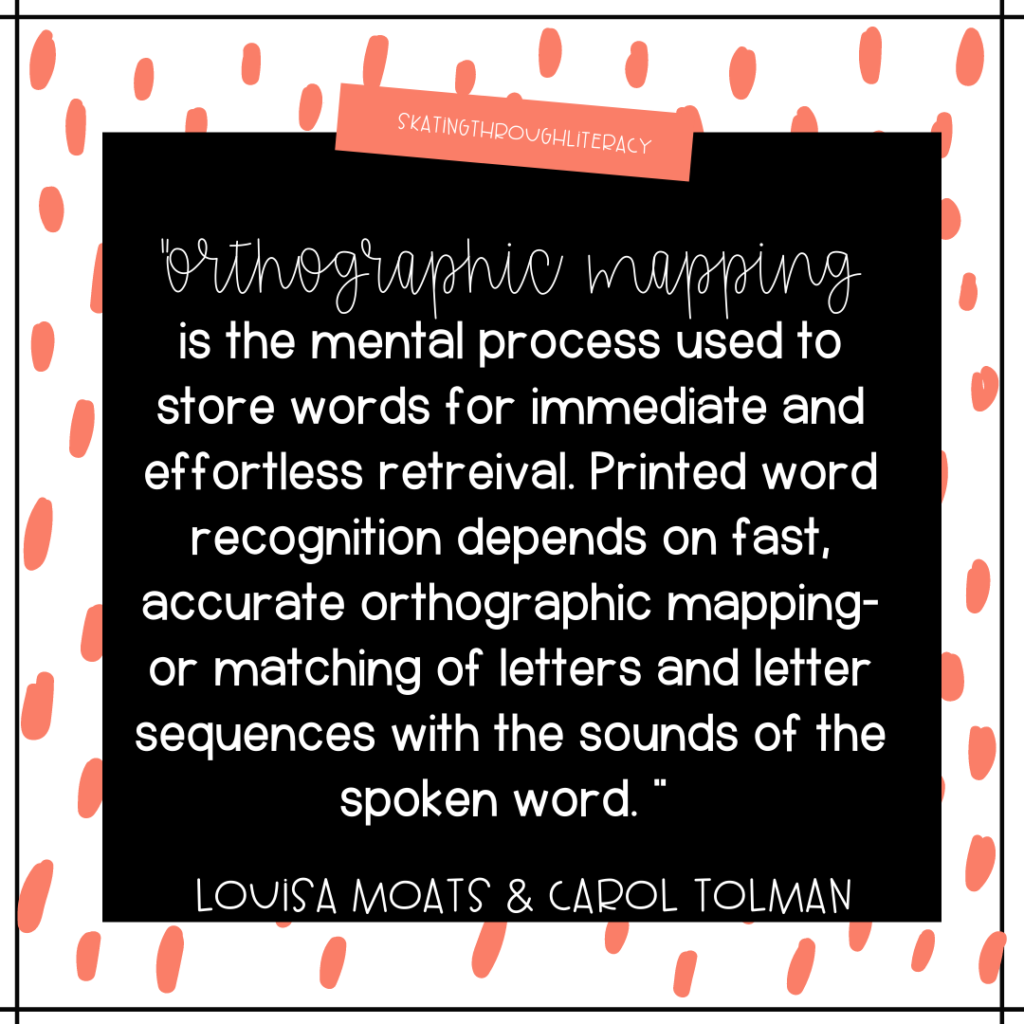
Therefore the use of the term orthographic mapping can be one debated and or misunderstood. Orthographic mapping in it’s original definition as coined by Moats and Tolman, is the mental process that is used to sore words for immediate and effortless retrieval. When people refer to the physical act of using orthographic mapping techniques with their students, many times they are referring to phoneme-grapheme mapping, which is the actual process of matching the sounds to the letters. Before actually mapping sounds to words, students should be able to orally segment words. Segmenting words and blending words are two routines that should be apart of your phonemic awareness routine in your classroom. It is essential that students be able to complete this orally, before attempting to add on the physical representation of the letters. If you want to learn more about phonemic awareness routines to use in your classroom, I highly suggest looking into Equipped for Reading as a great place to start.
How to teach orthographic mapping
As mentioned in the previous paragraph, orthographic mapping is the process our brain uses to automatically read that word on the page. However students who are weak in this mental process can struggle when it comes to decoding unfamiliar words. Teaching students how to match sounds heard with the letters can help students make the connection in their minds. Having students physically map the letters associate with the sounds is a very beneficial task that allows them to make these meaningful connections. The steps included in an effective lesson may include:
- Teacher gives student a word, both as an individual word and in context
- Student uses hand to tap out the sounds in word
- Mark the number of sound boxes needed in a word
- Student writes a letter for each sound box
- Teacher explicitly models the process with the students saying the sounds first
- Teacher explicitly models the process of writing the corresponding letter second
I have a free template in my tpt store that you grab and use with your students as early as tomorrow. I simply printed off one for everyone and put it in a clear protector sheet. Students keep these in their book boxes and we can pull out at any time to graph. We could use this for a phonics patterned word or an unrecognized high frequency word we encountered while reading. Incorporating this type of activity as a regular part of our reading block has made an astronomical difference in my students overall ability and confidence. Check out this blog post where I jump more into phoneme-grapheme mapping and how to do this with regularly spelled words and manipulatives.
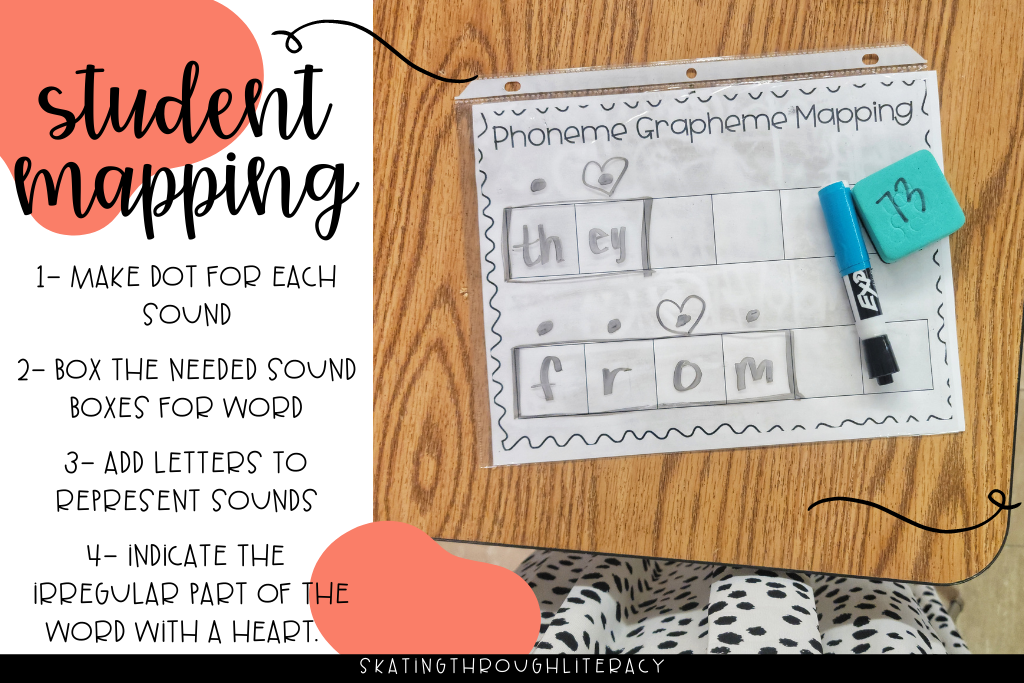
Heart words orthographic mapping
I grew up being taught both as a student and a teacher that there are certain words that just have to be memorized. There is no rhyme or reason to how they are spelled and that’s just how English is. However; according to Moats and Tolman only about 4% of all words in the English language are actually irregular. And within many words, most parts of the word are actually decodable with the exception of a sound. “About 50% of all words in English can be spelled accurately by sound-symbol correspondence rules alone. Another 36% can be spelled accurately expect for one speech sound; usually a vowel” Therefore, children should still use these phoneme grapheme mapping strategies to spell these high frequency words that may appear irregular with explicit instruction on the part of the word that creates the unexpected sound. The unexpected sound goes into a sound box, just as it would in a regularly decodable word. The difference here being the students then places a heart around that sound. We use the terminology that the unexpected sound is “the sound we have to memorize by heart.”
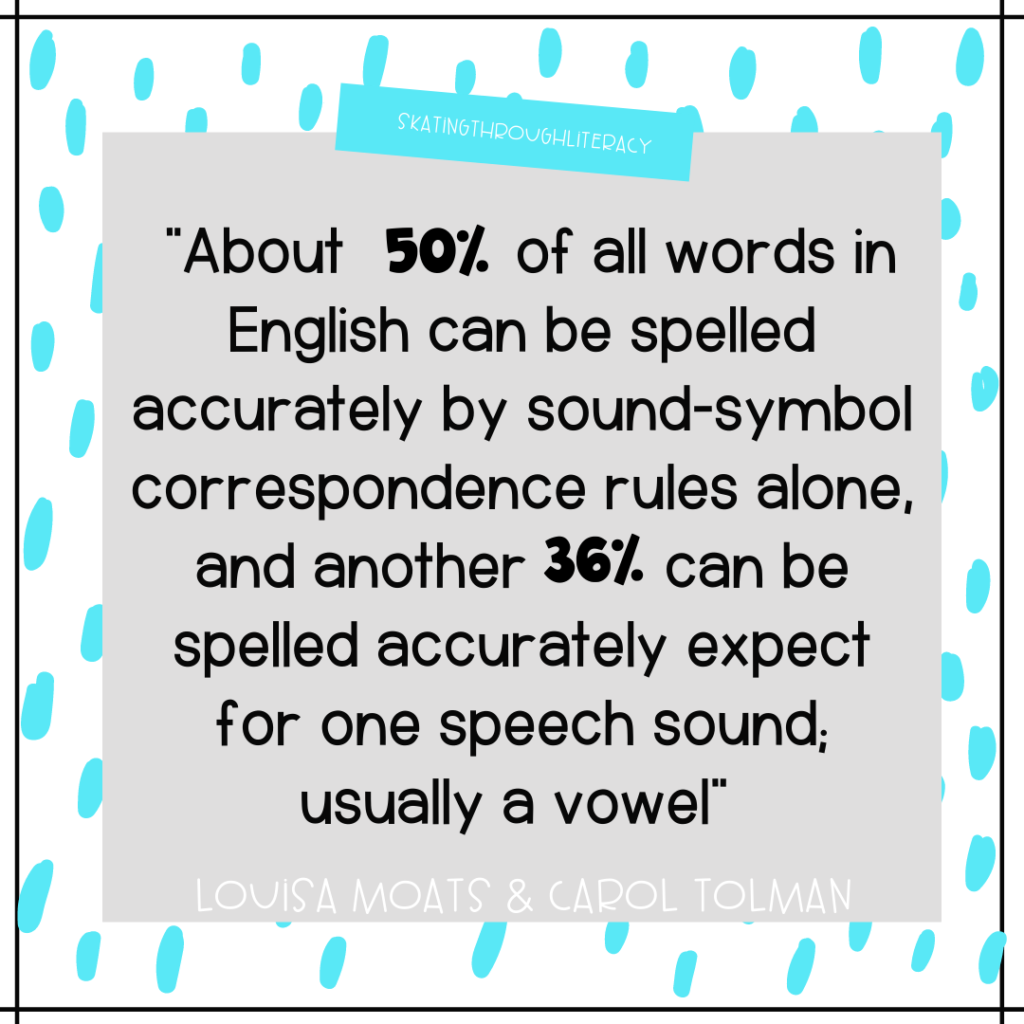
According to Linnea Ehi, “Recent findings indicate that [orthographic mapping] to support sight word reading is facilitated when beginners are taught about articulatory features of phonemes and when grapheme-phoneme relations are taught with letter-embedded picture mnemonics.” One of the most fascinating, or convincing, ideas that I read in all my research about sight words and how to best teach them is the argument behind there being no separate part of the brain that stores irregularly spelled words than regularly spelled words. So why would we teach sight words differently than our other phonetic patterns?
Let’s try this with ‘said’
The word said I have heard referred to as everything from high frequency, to sight word, to heart word, to popcorn word. So what’s the deal? This is where the process of phoneme-grapheme mapping can swoop in to make such sense of the English code. Said has 3 sounds in it so students would start by representing 3 boxes of sound. This can be done in a variety of ways: you can make it hands on by using blocks or an object to represent the 3 sounds or students can use a pencil or marker to create dots to represent the sounds. The first and last sound of said are decodable. So students would place a s to present /s/ and d to represent /d/. With the medial sound /e/ you would tell the students we would expect to see an e; however in this word the /e/ sound is represented by ai. Since this is the part that is not the letters we would expect, we mark it with a heart.
However, upon further look into the complexity of the word said, the word said is the past tense of say. The ‘ay’ at the end of the word ‘says’ the /a/ sound as it should and is at the end of the word, following the code of the English language. Essentially said is the ‘say + ed’ we can begin to understand how the meaning of this word, and the spelling of it’s other form, derives where the spelling of said comes from. By deeply analyzing our English language in these complex terms, we begin to minimize the amount of needing to blindly memorize words.
So how do heart words and sight words compare?
The term sight word is one that is frequently used incorrectly. A sight word is simply any word that a reader can recognize on sight. So as an adult reader, the word ‘entrepreneur’ is a sight word for me because I recognize it automatically. The term sight word is often used for what people are actually referring to as high frequency words. High frequency words make up 50-80% of text that students are exposed to. There are both regularly and irregularly spelled sight words. Regularly spelled high frequency words can be taught with phoneme grapheme mapping with the phonics pattern they align with. For example the word ‘and’ can be taught when students practice ‘an’ words and the word ‘with’ can be taught with the ‘th’ pattern. However, if a word is irregularly spelled such as said, from, or they, this is when those words would be taught as heart words.
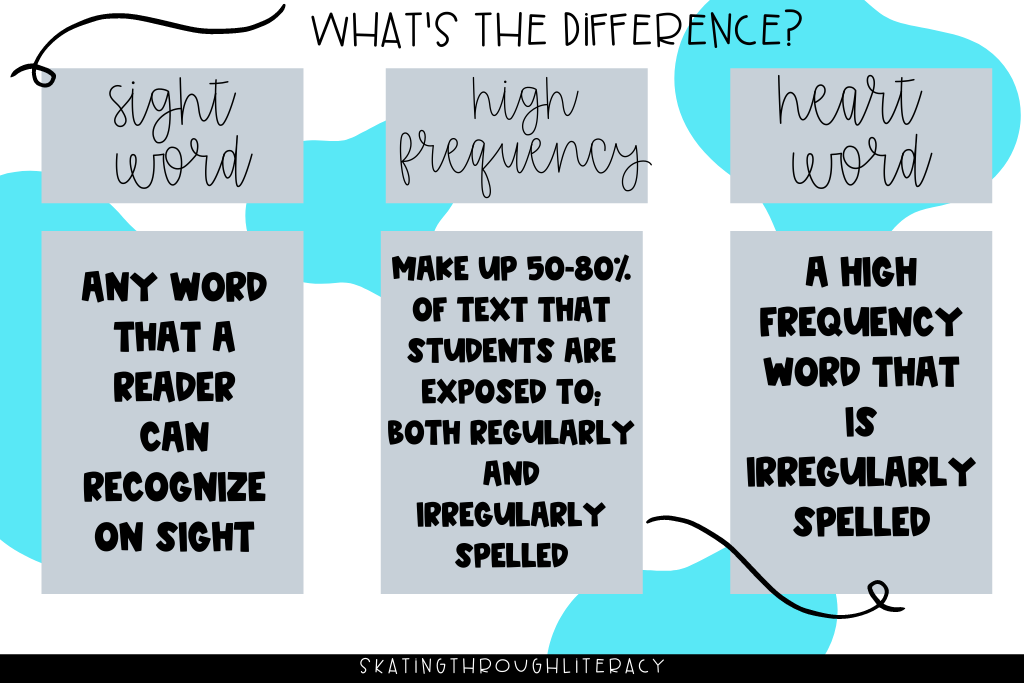
So as teachers we hope that all heart words eventually become sight words. However, not all sight words are heart words. If a heart word follows all letter-sound correspondence that you would expect, it is not a heart word. These words might include things like in, on, and it.
Is there a best order for teaching heart words?
Best practice according to all our top experts in the literacy field recommend putting these words together by patterns as much as possible. For example words like “he,” “she,” and “we,” should be put together since they follow the same concept. Also, heart words can be introduced if you are covering a certain phonics pattern for the week. If your class is working on “th” you could include heart word “the”. These bridges in helping students connect patterns they recognize and understand to other words within the language, also helps to strengthen their meaning of each of the words, and their understanding of where a word fits within the decoding skills they already know. Experts agree that once a student has currently identified or spelled one of these heart words correctly 3 times it has been stored in that long term letter box within our orthographic mapping process. It is now a sight word; a word students can read immediately upon seeing.
Well designed programs will introduce no more than 3-5 of these words a week. In my own practice, I only introduce about 2 a week. This focus really allows the students to focus in on our irregular words. I usually pull these words directly from their writing. If I see the word ‘very’ misspelled in multiple students work, I will jot that down on a sticky note. Very will then be our heart word the following week.
There are amazing free resources available for your use in helping you as you implement heart words in your instruction. The University of Florida is a wealth of information when it comes to resources for teachers. They have a great set of flashcards for free that you can print and use in your classroom today.
So what’s next?
The word that I continue to come back to in all my learning, understanding, and teaching is the word revamp. I am constantly revamping so many parts of my teaching:
- My own understanding of the English language and code
- My understanding of the brain and how we develop as readers
- Best practices to use within a classroom
- Tips and tricks that help certain learners see success
Much like most of my 10 years of literacy teaching so far, understanding how to help students master these irregularly spelled words within our language continues to be a process; but one that continues to become more and more clear with the science being presented. If you haven’t already downloaded my free e-book on 7 Steps to Revamp your Phonics Instruction, be sure to check that out. Print it out, reflect on your own practices, and identify just an area or two in which you can revamp as early as tomorrow.
What’s your current understanding of orthographic mapping, phoneme-grapheme mapping, sight words, high frequency words, and heart words? Are you clear in what each of those mean? How does that help you better instruct your students? I’d love to hear your thoughts and comments about all the ideas presented here.

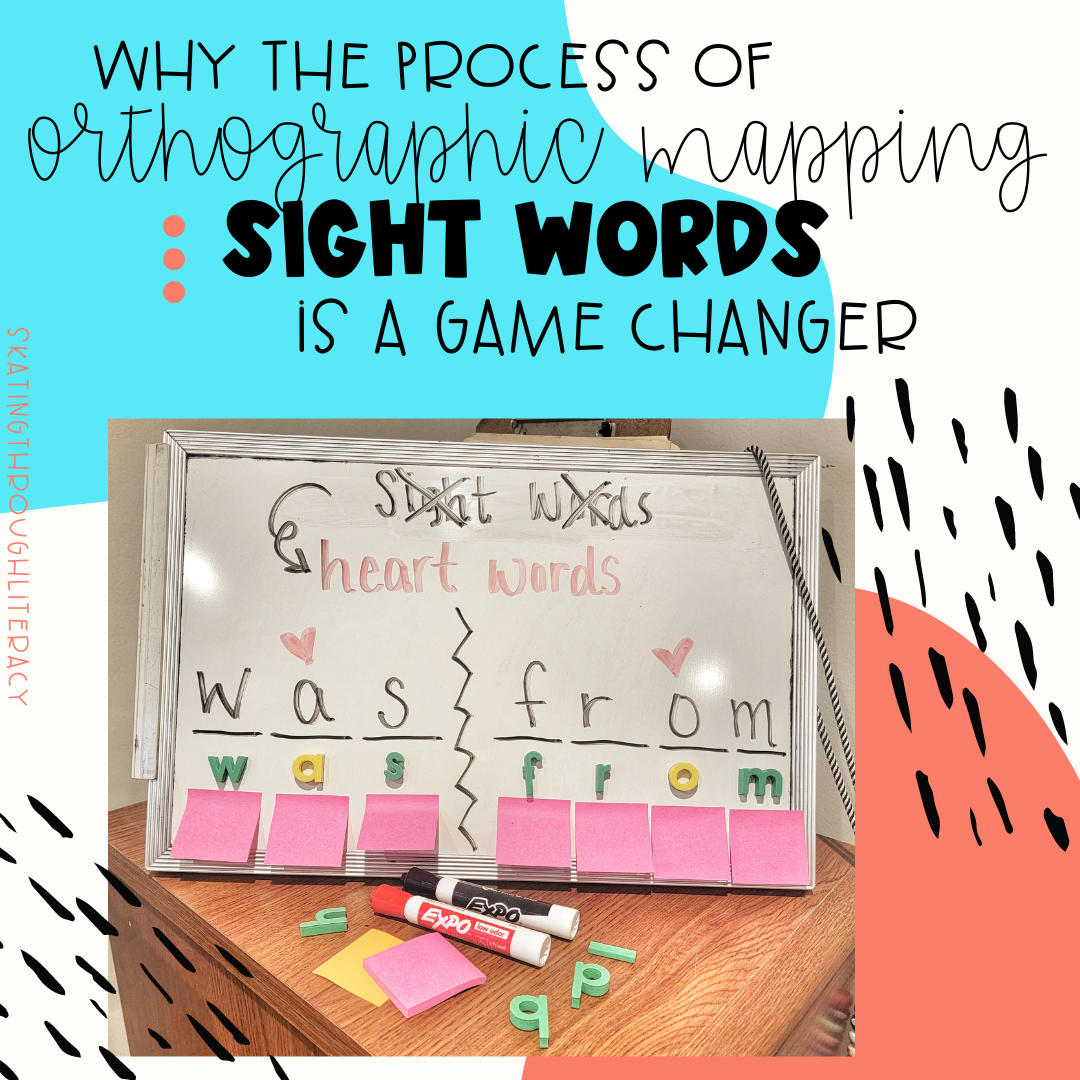
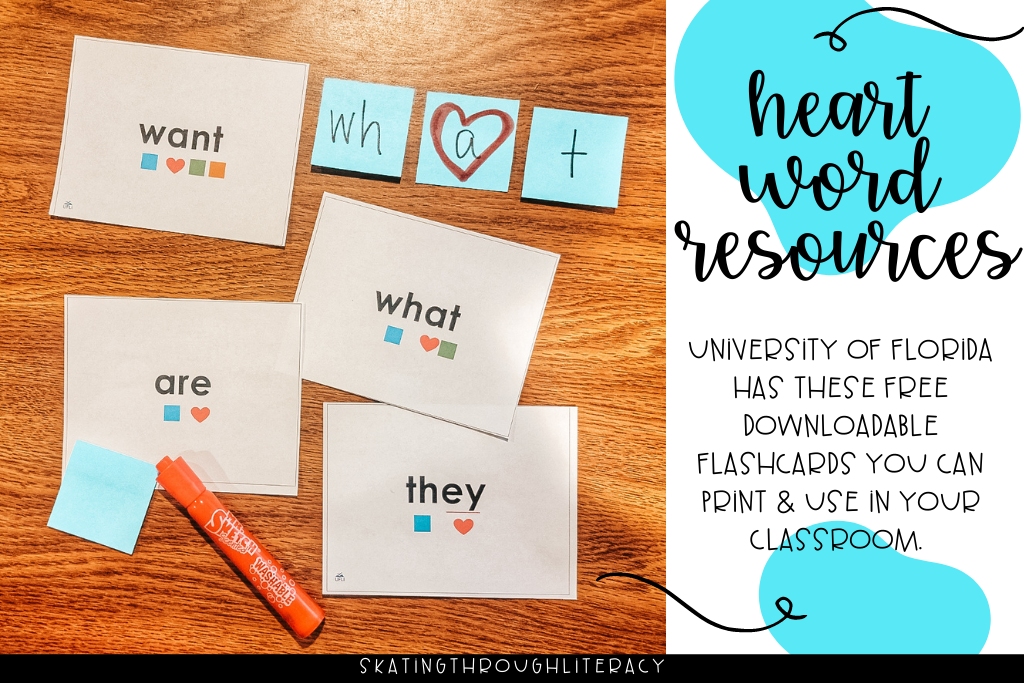
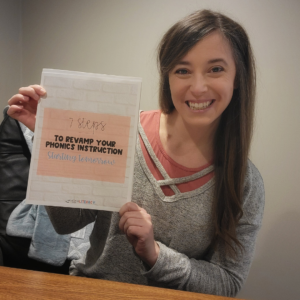
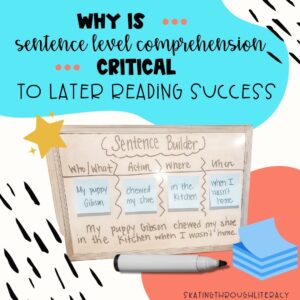
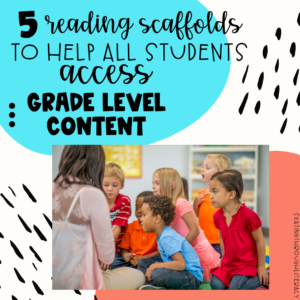
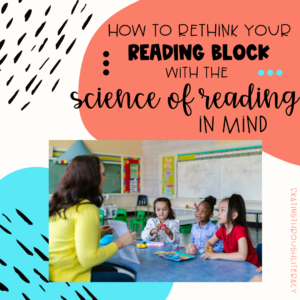

5 Responses
That was really helpful and informative!
Thank you!!
How many times would you say a student needs to orthographically map a word before it becomes a sight word for that student? I have 2 students (both dyslexic) that struggle to retain the words we have orthographically mapped.
This is such a good question! I’m not sure there is a solid answer I can provide here. From what I’ve read and understand through research is it is different for every child. Some will latch on much quicker than others, and those students, especially if they are also struggling with dyslexia, it will take mnay more exposures. Don’t give up though! You are on the track!
A colleague introduced me to heart words, and it makes so much sense. I am excited to facilitate this into my own teaching.